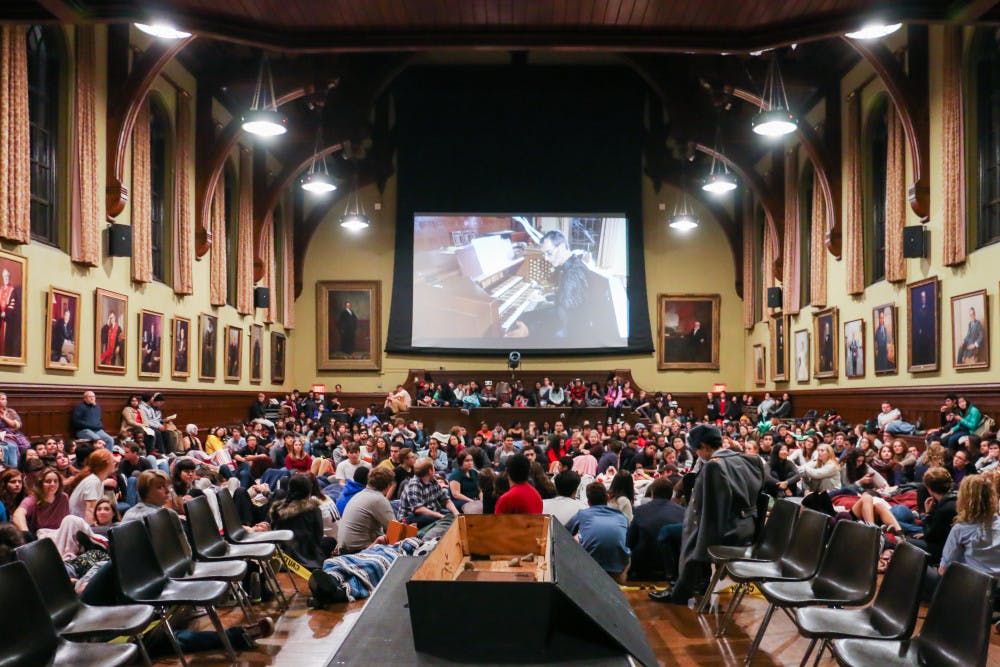Behind the organ, Mark Steinbach finds room to introduce his “families” of pipes, each with its own distinct contribution to the reverberations that consume Sayles Hall. Balanced on a precarious ledge within the instrument’s inner workings, Steinbach speaks from inside the organ. Steinbach knows this environment well as he manages the upkeep of the instrument in addition to being the University organist since 1993. Hidden behind the Hutchings-Votey organ, Steinbach speaks with a flickering cadence about the 14th century pipework in the Notre-Dame Cathedral and the discomforting nature of Yale’s ostentatious organ hall. He has no favorite organ as “each instrument is so different,” but he acknowledges the utility of a “specialized organ,” like a fully functional German Baroque or a French Romantic organ, though his position does not afford him access to such an instrument.
Trained at the University of Kansas before receiving a Fulbright scholarship that took him to Vienna and then the Eastman School of Music, Steinbach now plays “all the repertoire” in Sayles on an instrument that has innovatively used electricity since 1903 and pervaded the experience of Brown students throughout the 21st century. Tuesday morning at midnight, Steinbach played the annual Halloween Midnight Organ Concert, with a program that ranged from Monster Mash to Frederic Francois Chopin’s Funeral March.
“It’s always a dance juxtaposing these serious pieces with some more comic ones,” he said. “I kind of play with the juxtaposition.”
Chopin specialized in what Steinbach describes as “a sad, powerful poignancy” that reflects the composer’s difficult life. For many well-versed Brown instrumentalists, the tragedy of Chopin’s work plays with the extremes of Halloween’s darkness and stands in stark contrast with the celebratory atmosphere of Steinbach’s event.
Without knowing the history of the music, Steinbach said, it might be easier to “let the sounds wash over you.” In a space where students lie together in the shadow of an organ, sharing the floor’s vibration, “you get out of your head and into your body.”
In the “vestiges of a daily chapel,” in a hall of ostentatious portraits, the organ usually assumes a foreboding air. But for Halloween night, with gaudy spider webs tangled around its pipes, the instrument becomes a symbol of unity on campus, Steinbach said. From its position above a sea of students, the organ fosters an ambience representative of the Brown experience, he said, and embodies the “personality of our school” the same way Notre Dame’s instrument embodies “the cathedral itself.”





